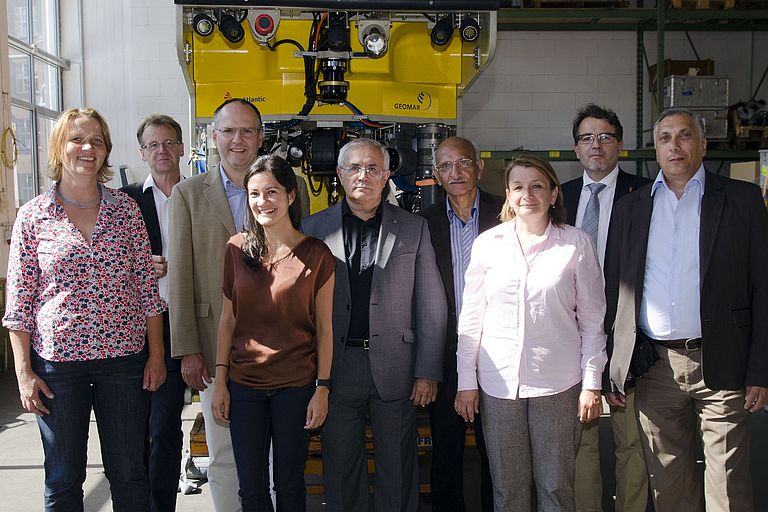Visitors from the Caspian Sea
GEOMAR visited by Geology Institute of Azerbaijan senior staff
28 August 2013/Kiel. One might say that “Caspian Sea“ is a misleading name, when in fact it is an inland lake. Yet, it is the largest lake on earth: 1200 km long and 400 km wide with a maximum depth of about 1000 m. Apart from its sheer size, the Caspian Sea shows a lot of other features which are usually found in the “real” seas, such as special geological formations where mud saturated in gas and water is extruded from the subsurface. The resulting mud mound structures look a lot like volcanoes, which is why they are called mud volcanoes. Just like in other marine environments, they indicate the presence of oil and gas in the subsurface. If studied more thoroughly, however, they may also reveal a lot about the structure of the subsurface and about chemical and geological processes within the Earth’s interior.
For this reason, scientists from GEOMAR Helmholtz Centre for Ocean Research Kiel have been working on the Caspian Sea coastal area since 2012 to learn more about this fascinating phenomenon. These activities were made possible by the help of the Geology Institute of Azerbaijan (GIA). GIA board members and senior staff came to visit the Kiel Helmholtz Centre for the first time today to learn about the whole range of research activities covered in Kiel. “The colleagues from GIA have helped us tremendously with their friendly support of our work on the Caspian Sea”, says Dr. Warner Brückmann, head of the GEOMAR “Energy and Resources” group. “ That is why we are particularly pleased to be able to return their hospitality”.
The visitors from Azerbaijan caught up on the general scope of research performed at GEOMAR and on the latest geophysical methods and projects in particular. During a tour of the GEOMAR premises they had the opportunity to get an impression of GEOMAR deep sea technology and take a look at high-tech equipment such as the ROV Phoca remotely operated vehicle and JAGO, Germany’s only manned submersible.
“Although the Caspian Sea region has been an oil production area for more than 100 years, there are still a lot of open questions concerning its geology and geophysics. That is why it is such a fascinating working area, be it for basic research or applied sciences“, Dr. Brückmann points out. “We hope that today’s visit will further advance our good cooperation with research institutions in Azerbaijan.“
Further Information:



